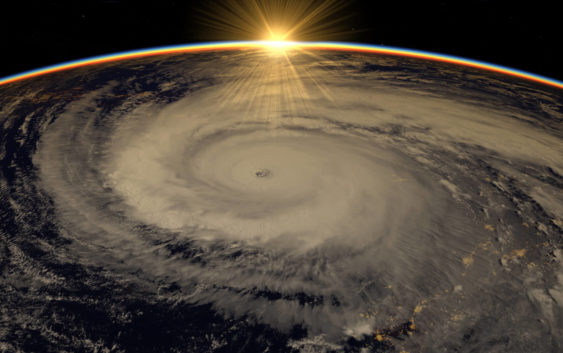- Timeline: Texas cold front brings hail, heavy rainfall risk to major cities
- Evacuation order issued as crews battle wildfire in McDowell County
- NC Gov. Josh Stein outraged by attack on PA governor, focuses on Hurricane Helene recovery
- Crews battling wildfire in McDowell County
- Raleigh City Council considers Hurricanes' $1B plans to develop 80 acres around Lenovo Center
Decoding The Intriguing Mechanisms Behind Hurricane Damage

Picture a colossal beast with swirling winds and a relentless fury – that’s a hurricane. These mesmerizing yet fearsome natural phenomena hold the power to reshape landscapes, shatter structures, and leave a lasting mark on both the physical and human worlds. In this article, we embark on an exhilarating journey to unravel the captivating mechanisms that drive hurricane damage, exploring the intricate interplay of wind, water, and force that transforms these mighty storms into agents of destruction.
The Anatomy of Destruction
To understand how hurricanes cause damage, we must delve into their anatomy. These behemoths are intricate systems fueled by warm ocean waters and the Earth’s rotation, resulting in a symphony of atmospheric forces that spiral into a vortex of power.
- Winds of Chaos: Hurricanes are driven by fierce winds that can reach astonishing speeds. These winds exert tremendous pressure on structures, roofs, and windows. As the hurricane’s eye approaches, the eyewall – the area with the strongest winds – can unleash a barrage of forces that rips apart structures with relentless intensity.
- Deluge and Devastation: The heavy rains that accompany hurricanes bring flooding that can cause catastrophic damage. Rising waters infiltrate homes, erode foundations, and weaken structures, leaving behind a trail of destruction as they recede.
- Storm Surge Surge: Among the most potent agents of hurricane damage is the infamous storm surge. As the hurricane’s winds push against the ocean’s surface, they create a bulge of water that surges onto coastal areas, inundating everything in its path. The combination of surging water and crashing waves can erode coastlines, breach levees, and submerge entire communities.
- Projectile Play: Hurricanes transform everyday objects into projectiles, launching debris with startling force. Tree branches, signage, and loose items become deadly missiles that shatter windows, puncture walls, and compromise the structural integrity of buildings.
The Science of Destruction
Hurricane damage isn’t just a random act of chaos; it’s a symphony of scientific processes that unleash the storm’s destructive potential.
- Air Pressure Drop: The plummeting air pressure at the core of a hurricane can literally lift roofs off buildings. As the pressure decreases, the air within structures exerts outward pressure, causing roofs to buckle and detach.
- Vortex Vandalism: The spinning motion of a hurricane creates a swirling vortex of air that can amplify the forces exerted on structures. Buildings experience varying pressure on different sides, leading to differential forces that can weaken walls and compromise stability.
- Suction and Uplift: The powerful winds of a hurricane can create a suction effect on structures, attempting to pull them upward. This suction, combined with the lifting forces generated by the storm’s rotation, can lead to roofs being torn away from buildings.
- Wave and Erosion Impact: The storm surge’s unrelenting waves deliver a one-two punch of force and erosion. The sheer energy of the crashing waves can obliterate coastal structures, while the constant battering can erode foundations and weaken structural elements.
Catalysts for Resilience
While hurricanes wield immense power, they also serve as catalysts for innovation, resilience, and preparedness.
- Advanced Warning Systems: Meteorologists use cutting-edge technology to track hurricanes and predict their paths. Advanced warning systems allow communities to evacuate, brace for impact, and take preventive measures to minimize damage.
- Engineered Defenses: Coastal areas have developed engineering marvels, such as seawalls, levees, and flood barriers, to mitigate the impact of storm surges. These structures act as shields against the storm’s forces, safeguarding communities and minimizing damage.
- Resilient Construction: Architects and builders have devised strategies to construct resilient homes that can withstand hurricane forces. Reinforced roofing, impact-resistant windows, and elevated foundations are among the features that enhance a building’s ability to weather the storm.
The intricate dance of forces that fuels hurricanes’ destructive potential is a reminder of the planet’s raw power and complexity. As we marvel at these awe-inspiring phenomena, we’re also reminded of the importance of preparedness, innovation, and resilience in the face of nature’s might. The tale of how hurricanes cause damage is one of science, power, and human ingenuity – a story that underscores our ability to adapt, rebuild, and emerge stronger after the storm’s fury has passed.